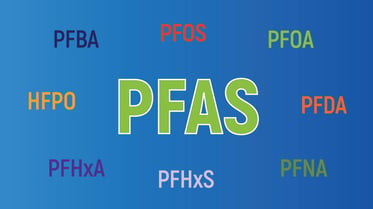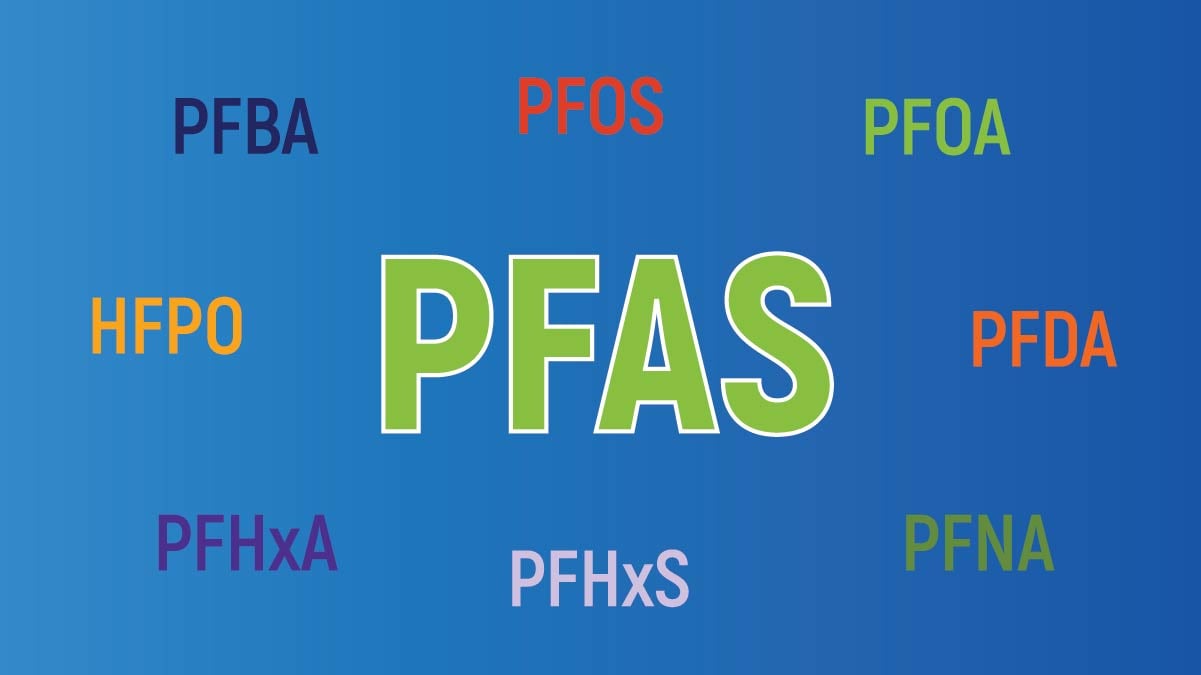Anyone who’s read the EPA’s Strategic Plans for 2021-2024 knows the agency has big plans for PFAS over the next few years. In this post, we’ll take a look back at 2021, revisiting the actions called for by the Strategic Plan as well as those executed earlier in the year.
UCMR 5 – The EPA announced plans to finalize its Fifth Unregulated Contaminant Monitoring Rule (UCMR 5) by Fall of 2021. The agency accomplished this goal, finalizing UCMR 5 on December 20th, the very last day that could technically be considered Fall. As expected, the key elements were as initially proposed: All public water systems serving 3,300 people or more (plus 800 smaller systems) will be required to begin testing for 29 PFAS plus lithium in 2023. For more details, visit our UCMR 5 info page.
With the final approval of UCMR 5, Pace® has also been approved to provide UCMR 5 testing services for water systems across the country.
National PFAS Testing Strategy –
 One of the obstacles to PFAS regulation has been the lack of toxicity data on the many classes of PFAS compounds. The 2021-2024 Strategic Plan called for developing a national testing strategy by Fall of 2021 to be funded and carried out by PFAS manufacturers. The National PFAS Testing Strategy was published in October, and the first testing orders are expected to start rolling out by the end of the year. This is just the beginning, and more manufacturers of PFAS compounds should expect to receive orders in the months – and likely, years – ahead.
One of the obstacles to PFAS regulation has been the lack of toxicity data on the many classes of PFAS compounds. The 2021-2024 Strategic Plan called for developing a national testing strategy by Fall of 2021 to be funded and carried out by PFAS manufacturers. The National PFAS Testing Strategy was published in October, and the first testing orders are expected to start rolling out by the end of the year. This is just the beginning, and more manufacturers of PFAS compounds should expect to receive orders in the months – and likely, years – ahead.
Publish Six Additional PFAS Toxicity Assessments – Toxicity assessments are the first step toward EPA-issued health advisories, and eventually, regulatory action. PFOA and PFOS were the first PFAS to be the subject of toxicity assessments, and regulations are just over the horizon for these compounds. In its 2021-2024 Strategic Plan, the EPA announced that it intended to release draft toxicity assessments for six additional PFAS. GenX chemicals (technically two chemicals – HFPO and its ammonium salt) and PFBA, PFHxA, PFHxS, PFNA, and PFDA. The target deadline for these assessments was Fall 2021 and ongoing. The GenX toxicity assessment was released in October 2021.

While the GenX assessment (as well as a PFBS assessment issued in April 2021) will not have an immediate regulatory impact, these assessments lead to an increased public and media awareness of the compounds. Since both chemicals are included in UCMR 5, data on their prevalence in drinking water systems across the country will begin accumulating in 2023. In the meantime, industry producers and users of these chemicals should be on high alert as the EPA uses the authority granted to the agency under the CWA (Clean Water Act) to monitor PFAS compounds of interest in wastewater discharge.
Other PFAS Actions Taken in 2021
It’s important to remember that the EPA’s focus on PFAS didn’t start with the publication of the 2021-2024 Strategic Plan in October. For example, Draft Method 1633 was published in August of 2021 and can analyze for 40 unique PFAS compounds. As written, the method closely resembles PFAS by Isotope Dilution, a method developed by Pace® for non-potable water and solids. Draft Method 1633 will be the foundation for some additional wastewater and stormwater discharge monitoring actions the agency plans to take in 2022.
Here are a few additional PFAS-related actions the EPA took in 2021:
- Strengthened the Significant New Use Rule (SNUR), restricting some long-chain PFAS.
- Announced that the agency expected to deny future Low Volume Extensions (LVEs) for new PFAS and apply a more rigorous premanufacture review.
- Encouraged companies to voluntarily withdraw from previously granted LVEs.
- Added 3 more PFAS to the Toxic Release Inventory (TRI) program, bringing the total number of PFAS in the program up to 175.
- Issued a proposed rule requiring all manufacturers and importers of PFAS dating back to 2011 to report data related to chemical identity, uses, production volumes, disposal, exposure, and hazards.
- Released draft risk values for PFOA and PFOS to the EPA’s science advisory board. These risk values are expected to lead to revised health advisories and will inform the national drinking water legislation anticipated to be proposed in 2022 and finalized in 2023.
Request a PFAS Technical and Regulatory Briefing
Pace® was one of the first labs to be approved for PFAS testing in drinking water, and since then, we’ve invested in PFAS testing capabilities for a wide variety of matrices, including non-potable waters, solids, biota, and air & emissions. If you need to get up to speed fast on what the EPA’s strategic plan means for your business or organization, we’d be happy to schedule a technical and regulatory briefing with one of our PFAS experts.





